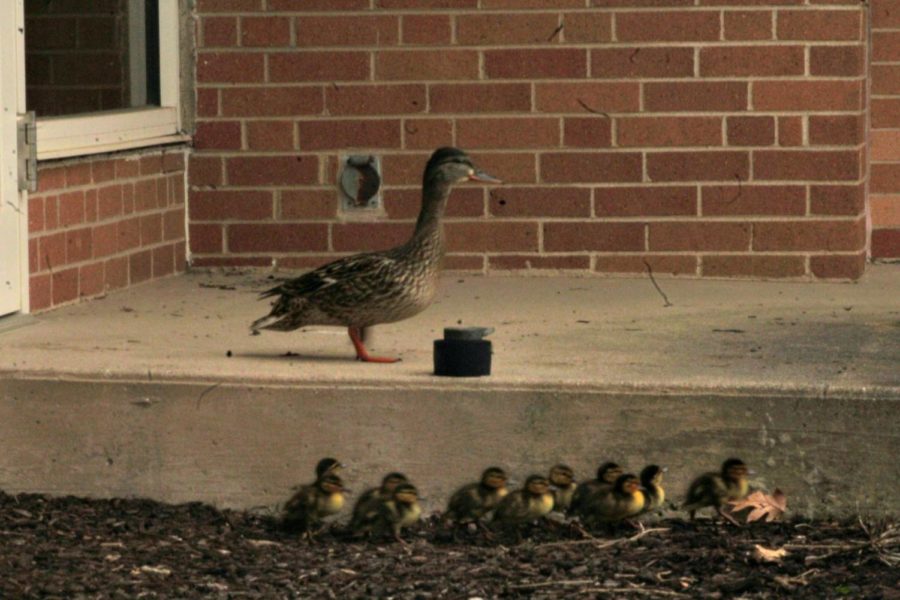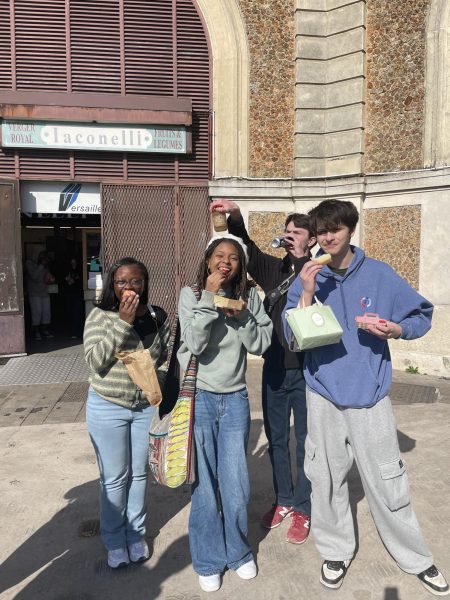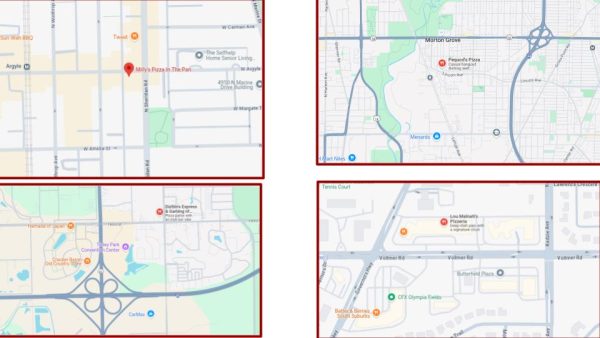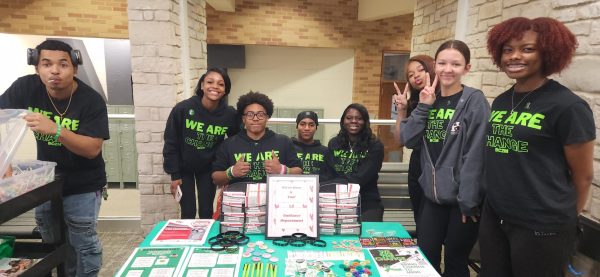H-F’s Resident Ducks Have Returned
H-F’s resident duck family in the A-Building courtyard on 5/8.
From baby ducks choosing to live in the courtyards of A building to baby geese at the Bio Pond, new wildlife is everywhere.
But why?
Why would adult geese and ducks with weeks-old babies choose to have chicks and goslings around obnoxious high school students who arguably present more of a threat than any predator?
The answer is migration patterns.
Despite the fact that weather in the Midwest is notorious for being unpredictable and inconvenient for us, it’s not the same for the ducks.
To begin with, the ducks that we have here at H-F are called anas platyrhynchos, but odds are you know them as common mallards.
These birds weigh roughly 1.6-3.5 lbs as adults and live about 5-10 years in the wild, according to Wildlife Illinois.
At face value, they’re nothing to write home about, but the fact that birds whose brains are the size of a walnut instinctively know when and where to go with the changing seasons is absolutely incredible.
For mallards, their journey begins in the span between August and December once it starts getting colder. These birds are likely to be found in Central America or the southern parts of the United States, according to Optics Magazine.
While not all mallards migrate, some, just like us, prefer the cold weather and survive on whatever they find, such as food found in parks.
The birds live happily in the warm temperatures, and then around March, they start to head back up north, usually the Northern U.S. and Canada.
These mallards then settle down and find a mate, which brings us to where we are now.
Eggs all over America are beginning to hatch and new life is beginning to appear.
“Do Ducks Migrate?” from birdfact.com reports that “Ducks have a strong breeding ground affinity, meaning they try to return to the same sites year after year. Whilst ducks are not commonly known for their sense of direction and navigational abilities, they’re excellent at following navigational cues that direct them back home after winter.”
This means that these mallards find themselves calling H-F High School home and appear to return year after year.
Odds are, these mallards chose the courtyard originally because of its proximity to the Bio Pond and the bushes that provide shelter for the mother and her rapidly growing babies.
“The March of the Ducklings is a springtime tradition in A-building for the last several years,” said English teacher Jacob Vallicelli. “This year, mama duck and her eleven ducklings went through the open door to the hallway when nobody was watching! A student alerted me and we helped them escape the building. Last we saw, they were across Kedzie safely and into the golf course.”
But what’s the next step?
It’s not safe for these ducklings to be left in a woodchip-covered square surrounded by windows and teenagers for the first months of their life.
Thanks to Vallicelli stepping in to ensure the safety and well-being of the babies, without separating them from their parents, they will happily reside at Coyote Run Golf Course until they surely return next year.










